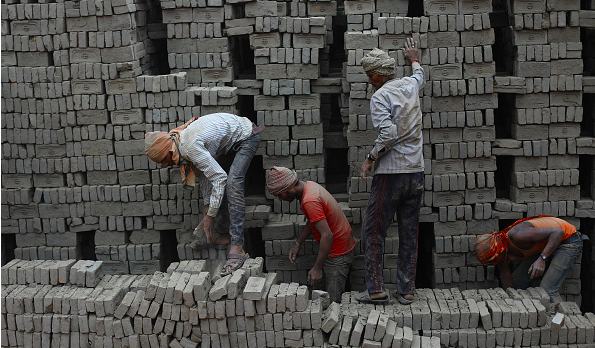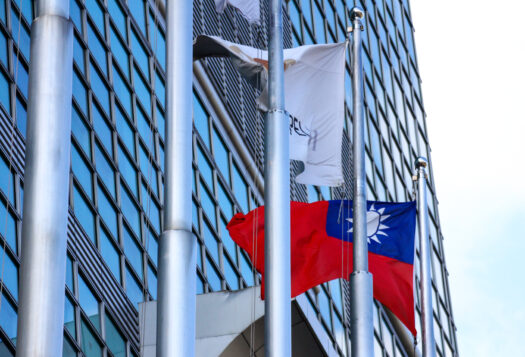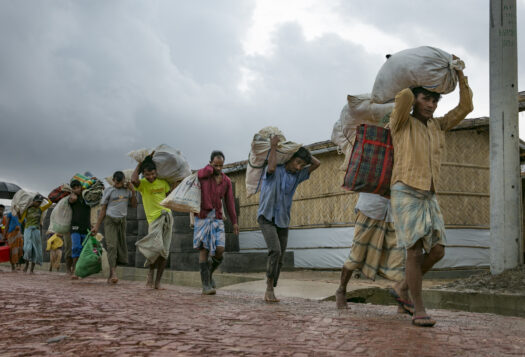
Nepali migrant workers stranded in the Gulf countries, Malaysia, and India to name a few have been hit hard by COVID-19. Some have already lost their jobs, while others are on the verge of job contract expiry. In the past decade or so, the number of Nepali youth seeking work abroad has steadily increased with the government issuing more than 3.5 million labor permits between 2008 and 2017, primarily for the Gulf and Malaysia. This number excludes the potentially millions of Nepali workers employed in India. Now, nearly half a million workers in Bahrain, the United Arab Emirates, Saudi Arabia, Qatar, and Oman want to return home, according to a preliminary report prepared by the Nepali government. The pandemic has already forced a wide swath of migrant workers to return to Nepal, which holds significant national and regional implications for the country.
The Nepali government is facing pressure from various quarters to evacuate its nationals as soon as possible. Nepali migrant workers abroad have reported increasing difficulties in repatriation and accessing basic necessities. For example, they have been left without food, shelter, and money, which means that any delays in government response is a matter of life or death. According to Foreign Minister Pradeep Gyawali, some countries have offered to arrange flights to repatriate Nepali workers. However, the government has asked them to wait while it makes preparations, largely in an effort to prepare for the possibility of the spread of the virus due to this influx of workers.
As more workers clamor to come home and with the Nepali government already struggling to control the situation as COVID-19 cases continue to increase, this could be an unprecedented crisis in the making. For one, it will be difficult to implement evacuation, testing, and quarantine procedures as a result of resource constraints and a poor healthcare system. But the government’s most significant challenge will be the herculean task of providing jobs to returned migrant workers. Further, it would also have to deal with the economic implications of losing migrant remittances, which constitute around 25 percent of the country’s economy. Nepal already faces an economic recession and rising unemployment. These issues will mark its response to the crisis in the coming weeks, and perhaps, redefine the country’s relationship with migration moving forward.
Nepal’s Repatriation Challenges
Nepal already faces an economic recession and rising unemployment. These issues will mark its response to the crisis in the coming weeks, and perhaps, redefine the country’s relationship with migration moving forward.
The Nepali government faces two principal challenges: the logistics of implementing safe repatriation, and the other a more fundamental question of how it would provide employment to returning workers. As the number of Nepali workers in the Gulf countries and Malaysia is especially high, the evacuation process may take months. The government will need to arrange commercial international flights—as it has an insufficient number of planes—while identifying those who can and cannot pay for these flights. Another logistical issue involves testing and the subsequent implementation of a quarantine. The government is already struggling to procure testing kits and personal protective equipment. The local governments can play a vital role in arranging the quarantine; however, they are already running out of resources and have failed to adequately monitor returning workers before the lockdown started. The federal government is likewise enduring financial stress. With the potential return of hundreds of thousands of migrant workers, both the federal and local governments are likely to have difficulties enforcing a quarantine.
Beyond these logistical challenges, providing employment to returned migrants will be a formidable task, even as hundreds of thousands of workers within the country are expected to lose their jobs. According to the Ministry of Finance’s Nepal Labor Force Survey 2018, it is estimated that around 500,000 people enter Nepal’s labor market annually. Further, Nepal’s estimated unemployment rate is currently 11.4 percent. If coronavirus forces migrant workers abroad to return in large numbers, the rate of unemployment will go up, cause additional stress on the government.

What Lies Ahead?
The migration crisis engendered by COVID-19 may force Nepal to rethink its labor policies in a world of tightened borders, especially with an eye towards preventing the radicalization of unemployed citizens. With some countries putting pressure on Nepal to evacuate its workers amid COVID-19 concerns, Kathmandu might reconsider sending its labor force to those countries in a post-pandemic future—whatever that may be. Also, as a result of the global recession and closed borders, Gulf countries may not be predisposed to receiving as many Nepali migrant workers in the future. Thus, in the medium to long-term, Nepal may have to explore other regions for foreign employment. Though this would only happen if a vaccine becomes widespread, borders re-open, and migration once again becomes a norm.
The migration crisis engendered by COVID-19 may force Nepal to rethink its labor policies in a world of tightened borders, especially with an eye towards preventing the radicalization of unemployed citizens.
Additionally, the Nepali government would have to consider ways of including the returned workers in the domestic workforce. A sector that may be able to absorb this labor is agriculture. Partially as a result of young people seeking employment abroad over the course of the last two decades, rural villages were left empty and fertile land barren. Thus, returned migrant workers, particularly the youth, could seek domestic employment in farming.
If the government fails to create jobs for unemployed youth, it risks creating a population vulnerable to armed-group recruitment. In 1996, when the Maoists began an armed insurgency in the country, they recruited large numbers of unemployed people from rural areas. Today, a failure to create jobs for the young can threaten Nepal’s newfound political stability. The Maoist splinter group led by Netra Bikram Chand has already launched an armed insurgency. To date, the strength of the force is very minimal, but it could benefit from this crisis. To avoid a circumstance in which this insurgency intensifies while still staying on course for economic growth in the future, the government would have to delicately handle the issue of repatriation and re-employment of migrant workers.
***
Image 1: Wikimedia Commons
Image 2: NurPhoto via Getty Images


